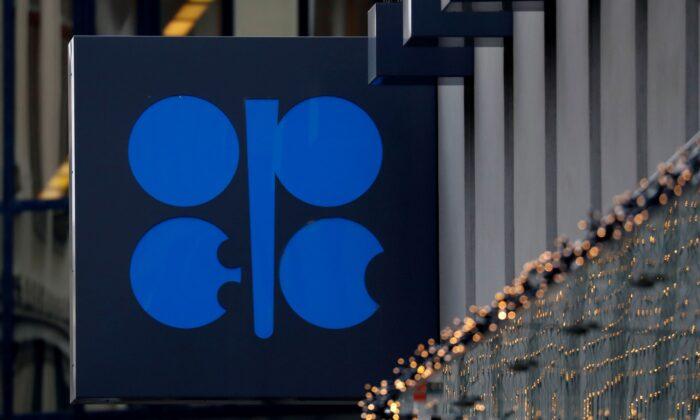LONDON—OPEC on Monday cut its forecast for 2022 global oil demand growth for a fifth time since April and further trimmed next year’s figure, citing mounting economic challenges including high inflation and rising interest rates.
Oil demand in 2022 will increase by 2.55 million barrels per day (bpd), or 2.6 percent, the Organization of the Petroleum Exporting Countries (OPEC) said in a monthly report, down 100,000 bpd from the previous forecast.
“The world economy has entered a period of significant uncertainty and rising challenges in the fourth quarter of 2022,” OPEC said in the report.
“Downside risks include high inflation, monetary tightening by major central banks, high sovereign debt levels in many regions, tightening labour markets, and persisting supply chain constraints.”
This report is the last before OPEC and its allies, together known as OPEC+, meet on Dec. 4. The group, which recently cut production targets, will remain cautious, the energy minister for Saudi Arabia, the OPEC+ de-facto leader, was quoted as saying last week.
Next year, OPEC expects oil demand to rise by 2.24 million bpd, also 100,000 bpd lower than previously forecast.
Despite commenting on the rising challenges, OPEC left its 2022 and 2023 global economic growth forecasts steady and said while risks were skewed to the downside, there was also upside potential.
“This may come from a variety of sources. Predominantly, inflation could be positively impacted by any resolution of the geopolitical situation in Eastern Europe, allowing for less hawkish monetary policies,” OPEC said.
Move to Surplus
For October, with oil prices weakening on recession fears, the group made a 100,000 bpd cut to the OPEC+ production target, with an even bigger reduction starting in November.Saudi Arabia said the latest cut was necessary to respond to rising interest rates in the West and a weaker global economy. U.S. President Joe Biden criticized the decision, calling it shortsighted.
OPEC said in Monday’s report that in the second and third quarters of this year, global oil supply outpaced total oil demand by 200,000 bpd and 1.1 million bpd respectively, having been in a deficit of 300,000 bpd in the first quarter.
OPEC said its output in October fell by 210,000 bpd to 29.49 million bpd, more than the pledged OPEC+ reduction, led by a 149,000 bpd cut by Saudi Arabia. The figures are compiled by OPEC using secondary sources.
Saudi Arabia itself, however, reported to OPEC a smaller drop of 84,000 bpd, bringing its October output to a shade below 11 million bpd.





